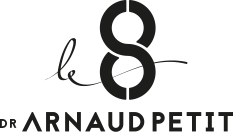Rhinoplasty (Nose surgery)
Facial surgery
The rhinoplasty consists in modifying the nose shape, and improving the breathing function in some cases.
It is regarded as one of the most complex and difficult Plastic Surgery procedures. It requires a deep knowledge of the anatomy of the nose, advanced surgical skills, as well as an artistic and three-dimensional vision of the nose.
During his surgical training, Dr.Petit benefited from the experience of an expert in the closed rhinoplasty, , who passed his artistic philosophy relating to a successful nose surgery on to Dr.Petit. His philosophy lies on the enhancement of the aesthetic appearance of the nose in order to focus on a more global objective dedicated to a harmonious beautification of the face. The objective of a rhinoplasty is not to change the nose, but to perform subtle refinements while respecting its identity and nature. Maintaining the architectural integrity of the nose is essential to obtain a natural result, with a long-term and stable effect, and to preserve the breathing function.

Procedure steps
- Dr. Petit will listen to you in order to understand your aesthetic and/or functional discomfort in the nose region, its psychological effect, as well as the desire to correct it.
- He will note the anatomical specificities of your nose, and will examine your nose within your face more generally.
- Dr Petit will determine a therapeutic plan corresponding to your requests with you and compatible with what is achievable surgically, after simulations for correction based on pre-operative photos.
- In case of breathing difficulties, a scan of the nasal passages will be prescribed in order to examine your septum.
- Dr. Petit will provide information on the scar positioning, treatment process and procedure limits, post-operative recoveries as well as main risks, so as to make an informed decision.
Procedure limits
- The asymmetries located in the nose region before the operation are not always correctable by a nose surgery (for instance, an asymmetry relating to the implantation of the nostrils).
- A thick nasal skin is a factor limiting the result of a rhinoplasty, given that the latter complies with the new bone and cartilage structure less well.
- The achievement of a perfectly straight nose from the frontal view is not often possible in the cases of a very deviated nose, owing to a memory of the nasal skin.
Good candidates for a nose surgery are those
From the frontal view, uncomfortable with:
- The width of their nose (too wide).
- Their deviated nasal pyramid.
- The tip of their nose (too wide).
- Their nostrils (flared).
In profile, uncomfortable with:
- A bump or a depression of the nasal bridge.
- The length of their nose.
- The tip of their nose.
- Their prominent nasal spine (curve between the nose and the upper lip).
- And/or with breathing functional problems (due to a deviated septum).
And having understood the procedure limits.
Pre-operative instructions
General pre-operative instructions relating to aesthetic surgery
- Smoking cessation 1 month before and after the procedure.
- Discontinuation of medicines which increase bleeding 10 days before and after the procedure: aspirin, anti-inflammatory and anticoagulant medicines, vitamin E.
Specific pre-operative instructions relating to nose surgery
- Do a scan of the nasal passages in case of breathing difficulties, to bring back on the day of your operation.
Procedure stages
The procedure is performed under general anesthesia, on an out-patient basis (hospital discharge that very evening). A local anesthesia together with an intravenous sedation is possible if the associated gestures are limited to the tip of the nose.
Concerning the nose surgery, two principal methods can be mentioned, namely the closed and the open rhinoplasty.
The open rhinoplasty means that a cutaneous incision is performed in the columella region (cutaneous bridge situated between the two nostrils).
Dr. Petit uses this approach only when the anatomy of the nose is complex or for secondary rhinoplasties (revision of the rhinoplasty).
Dr. Petit essentially performs closed rhinoplasties, namely without external incision on the columella. The incisions are hidden inside the nostrils (in the mucosa area of the nose), and enable to expose the cartilage and the nasal bones as well as the septum (in case of associated septoplasty).
This surgical approach is adapted for a majority of patients wishing a nose surgery for the first time. It is less invasive and reduce recovery time. It achieves to give natural and predictable results, with a long-term and stable effect.
In some cases, a scar located in the natural cutaneous furrow at the base of each nostril is necessary to reduce flared nostrils (too wide). These scars are almost invisible full-term.
The closure of the nasal mucosa is performed with resorbable sutures.
The cutaneous closure of the nostrils (in case of nostril reduction) is performed with non-resorbable sutures.
A plaster splint is applied to the nose, an absorbent nasal pack is placed within each nostril at the end of the operation.
What to expect after surgery
The rhinoplasty is not a painful procedure.
A feeling of blocked nose is typical and of varying lengths, depending on the patients.
Ecchymosis (bruises) and oedema (swelling) in the nose area, and around the eyes, are typical, during 10 to 15 days on an average.
The nasal packs are removed without pain before you leave the surgical center.
The shower is possible the day following the procedure without soaking the plaster.
It is recommended to avoid blowing your nose even if it seems to be blocked.
The cleansing of nasal cavities with physiological saline is advised during this feeling of nasal obstruction.
The plaster is removed 7 to 10 days after the procedure, as well as the sutures in the nostril area if they were reduced.
The resumption of daily activities is possible the day following the procedure.
The resumption of professional activities can be done from the removal of the plaster.
The resumption of sports activities is authorized within 1 month after the procedure. Contact sports will have to be avoided over 6 weeks.
The procedure risks
The complications of a rhinoplasty are rare.
The main risk related to the procedure is an imperfection of the result, which may require a surgical revision in about 5 % of the cases.
Long-term result
The final result of a rhinoplasty is obtained 1 year after the procedure. Over this period, the nose will gradually deflate, be refined and regain its suppleness.
One year after the procedure, Dr. Petit will see you again to assess the definitive result.
The result is stable and long-lasting.


